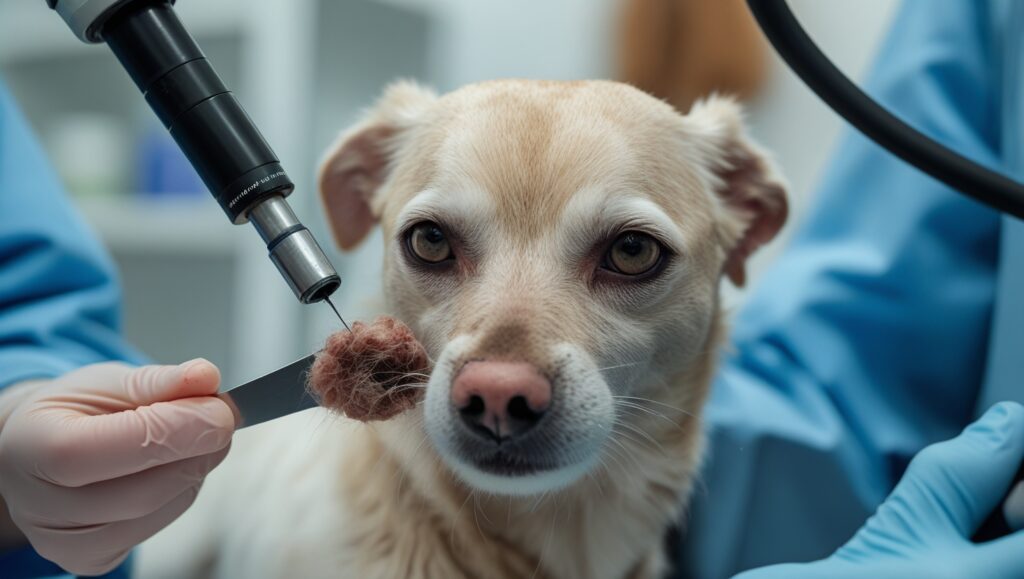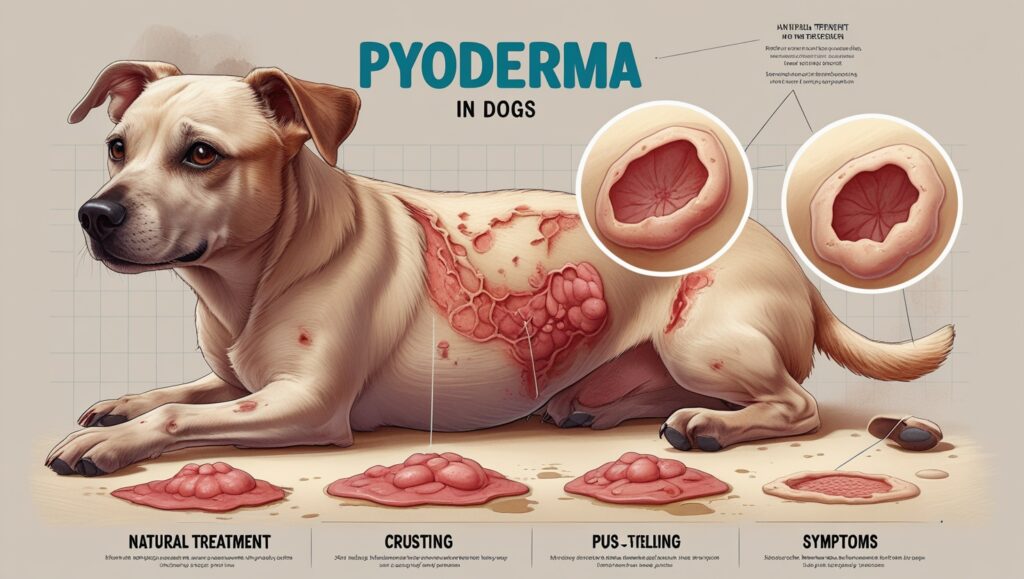If your dog shows a weird rash and you’re unsure if food is the issue, you’re not alone. Food allergies are often overlooked by many pet owners, leading to persistent skin problems. After that, we will specify the way dogs can get skin rashes following food and the appearance of the rash (with description), as well as how you can alleviate the condition of your dog.

Does Dog Food Cause Any Rash on the Skin?
A skin rash is usually the most common sign of a food allergy in dogs, which manifests as itching of the skin on the ears, abdomen, feet, and face. Such allergies are most often triggered by the usual components of commercial dog foods, including:
- Beef
- Chicken
- Dairy
- Wheat
- Eggs
- Corn
- Soy
When the immune system of a dog recognizes a food protein that is as a threat, it triggers an inflammatory reaction, which in most cases leads to redness, bumps, lesions, and incessant itching.
What Are Rashes From Dog Food Allergies?
Physical Manifestations of Cutaneous Allergy to Dog Food
Even though each dog is unique and affected differently, the following are the most frequent food allergy symptoms and rashes:
- Inflamed skin with red coloration. Red, inflamed skin.
- Dry scales and flaky patches.
- Pustules or pimples.
- Oozing sores
- Baldness or hair loss.
- Thickened skin or darkened skin.
- Recurrent ear infections.
Most Diseased Areas:
- Ears
- Underarms
- Groin area
- At the mouth or eyes
- Between the paw pads
- Belly and inner thighs
These are the places that you will first see in the pictures or photos, whether you search for skin rash or dog food allergy pictures. There are also more extreme complications where secondary bacterial/yeast infections will also manifest themselves if scratching is frequent.
The Signs That Will Indicate It is an Allergy to Food
It may be difficult to determine the cause of a food-induced rash or an environmental one. Nonetheless, such indications point quite strongly to food as the culprit:

- They do not only occur in a certain season, as the symptoms are all around.
- Your dog has not only itchy skin but also digestive problems (including soft stool, gas, or vomiting).
- Elimination diet improves the rash during the dietary period.
- It flares back with some reintroductions of ingredients.
What Is The Reason Dog Food Allergies Are Suddenly Apparent?
Most pet parents question themselves why their dog develops an adverse reaction to a food item they have been eating over the years. The following are the reasons why it can occur:
- Delayed Allergy due to Immune Sensitization Over Time: A later-onset allergic reaction can be caused by an exposure to one protein (such as chicken) over an extended time.
- Alterations to the Gut Microbiome: Antibiotics, stress, or disease can lead to immune tolerance being weakened.
- Employment of Low-Grade Ingredients: Fillers, additives, or covert proteins in miscellaneous food items
- Age-Related Sensitivity: As age goes by, so does the dog develop new allergies, just like people.
Familiar Dog Foods that cause Allergies
Among the most popular allergens of dog diets should be mentioned:
- Beef: It is one of the most guilty.
- Chicken: an irritating wanderer that is common.
- Dairy: May induce GI upset as well as skin problems
- Wheat and Grains: badly tolerated
- Eggs: The yolks and the egg whites can be a problem.
- Lamb and Fish: As good as unlikely
So-called grain-free or premium foods also list these triggers in the guise of chicken fat or meat products.
How to Diagnose a Dog Food Allergy?
Diagnosis of a Dog Food Allergy. The most common way to diagnose a dog food allergy is to eliminate the food and determine whether the animal has a food allergy.
It is not always easy to diagnose a food allergy, but this is what vets tend to suggest:
1. Exclusion Trial Diet
Put your dog on a new protein source (such as venison, duck, or rabbit) and a limited ingredient diet for at least 8-12 weeks.
During this period, there are to be no treats, no table scraps, and no flavored medication.
In case of the disappearance of symptoms, gradually add ingredients to figure out the cause.
2. Allergy Testing in Veterinary
There are blood tests that are not always accurate in the case of food allergies.
Elimination diet is still gold.
Top Dog Food Choices for Dogs with Allergies
As a remedy to subside food allergy-triggered rashes, you may opt to use either of the following:

- Hydrolyzed Protein Diets: The goal of protein breakdown is to prevent immune reactions.
- New Protein Diets: Feed your dog with proteins he/she has never consumed (Such as kangaroo or bison proteins).
- Limited Ingredient Diets: These diets contain fewer ingredients, and this helps in the identification of the allergens.
When making adjustments, at least consider your vet.
Home Therapies to Cure the Rash
These tips can ease your discomfort as long as you are still trying to figure out the allergen:
- Oatmeal Baths, 1901: Oatmeal baths soothe aggravated skin and are chemically free.
- Coconut Oil: works on dry, flaky areas (natural antibacterial)
- Antihistamines (vet ok) are itch reducers.
- Shampoos/Medicated Wipes: Clean and avoid infection of affected regions.
- Trim nails to prevent cases of self-inflicted injuries through scratching.
Never use over-the-counter creams designed for people, unless a vet has advised it.
When Should You Visit the Vet?
Take your dog to a vet in the following cases:
- Bleeding or open sores.
- Continued sticking out of the tongue or chomping.
- Fever or stupor.
- Vomiting or diarrhea that does not stop.
- Very fast deterioration of the skin condition.
The allergy can be removed by early detection and therapy before it turns out to be a permanent problem.
Final Thoughts
The skin rash dog food allergy pictures are something that can go unnoticed and ruin their skin with organ inflammations due to the itchy and even painful rashes that persist, however hard they are pushed away. Bumps, redness, or regular skin infections are symptoms that you cannot afford to ignore. Your dog will be able to get permanent relief with the support of the proper diet changes, supportive care, and the help of the veterinarian.
FAQs
1. What does a dog rash caused by food allergy look like?
It can be considerably seen as red, inflamed skin lumps, dry skin, and hair loss, particularly on the ears, paws, belly, and groin.
2. What is the duration of food allergies in dogs?
Symptoms may be manifested within a couple of hours or days of ingesting the allergen, although in others, it may take weeks of regular exposure.
3. Are dogs able to get unexpected food allergies?
That is true even when your dog has been eating the same food for years, and still, sudden allergic reactions may appear.




Pingback: 3 Pictures of Pyoderma in Dogs: Symptoms & Treatment Tips